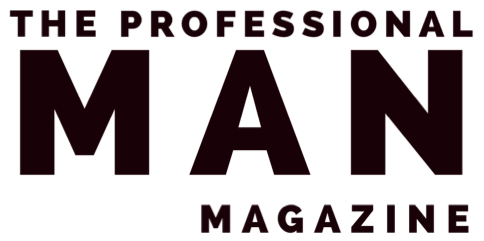Public speaking is a skill, not a talent which, with practice and implementation of a strategy, can lead to fantastic results. The thought of public speaking strikes fear into the hearts of many individuals; however, this need not be the case. As speaker Eoin Macken states: “It’s okay to feel nervous about something new or challenging – pushing past those nerves is when we grow.” With some help from seasoned pros in the field, some tips can make your next speaking engagement a bit easier.
Tip 1: Practice, practice, practice
You’ll begin making strides forward in no time by taking time out each day to rehearse and memorize key points. Author and speaker Simon Sinek once said, “Nobody’s perfect, but we can all improve with practice.” This advice is crucial for those looking to become better public speakers. Practice makes perfect, after all, and rehearsing a speech multiple times beforehand can significantly boost confidence and comfort with the material. Rather than forgetting lines or tripping over words, public speakers can focus on connecting with their audience and delivering their message effectively.
Tip 2: Know your audience
When aiming to become an exceptional public speaker, there are several critical elements to remember, according to Brené Brown- a world-famous researcher and writer. “Speak in a way that makes people want to listen to you. Make sure you’re engaging and interesting, and don’t be afraid to be a little bit vulnerable.” – Brené Brown, Author and Researcher.
Being captivating and relatable is crucial, as is knowing your audience inside out: what drives them? Their interests? What are their expectations for your presentation? By catering specifically to their demands, the impact of what you say will only grow stronger.
Tip 3: Start strong and end strong
Dale Carnegie, author and public speaker, once said, “Tell them what you’re going to tell them, tell them, and then tell them what you told them.” This quote highlights the importance of starting strong and ending even stronger during a presentation. The beginning sets the tone for the rest of your talk, while the closing leaves a lasting impression on your audience. Take advantage of these key moments to hook your listeners’ attention and provide a clear takeaway.
Tip 4: Use storytelling to connect with your audience
According to renowned author and screenwriter Robert McKee, storytelling is the most dynamic tool in spreading ideas today. It can be a powerful approach to establishing a deeper connection with your audience. Sharing personal accounts and engaging in real-life scenarios or imaginative plots can make your content relatable and resonate with people.
Tip 5: Use visual aids to enhance your message
Nancy Duarte, an author and public speaker, explains that visuals should not just decorate your slide contents but also enhance your message’s memorability. As the saying goes, “Practice makes perfect.” Anyone can become a skilled public speaker with dedication and practice. To enhance your delivery, consider utilizing presentation tools such as visuals or multimedia elements to add interest to your content. Using these resources thoughtfully is essential without overwhelming or distracting from your message.
Tip 6: Embrace your nerves
Nerves are natural. They show you care about your message and your audience. Use that energy to fuel your performance.” – Carmine Gallo, Author and Public Speaking Coach. Remember that feeling nervous before a presentation is natural, even healthy and can energize you to deliver an engaging performance. When it comes to public speaking, anxiety can be tough to handle for many people. However, nerves aren’t always bad things as they help provide focus on communication goals if managed well. Rather than fighting against that uneasy feeling in one’s gut, embrace it and turn it into positive power because nerves play vital roles in making presentations successful.
Additional tips
Other ideas could be practising ahead of time with large groups of people, knowing about what will touch listeners’ hearts most deeply, being mindful of bringing exciting openers and finishes, and adding powerful visual aids like videos, music, images, charts and diagrams. Various elements go into crafting a practical public speaking performance, from clear enunciation and body language to deliver an engaging story or message. The heart of any successful presentation is to start with something meaningful for the speaker. Known as ‘starting from purpose’, this approach helps build authenticity and connection between a presenter and their audience, according to Michael Port, Author & Public Speaking Coach.
According to author and speaker Jay Baer, authenticity is what audiences crave, and this quality helps individuals stand out amongst their peers. This sentiment is echoed by poet and writer Maggie Smith, who believes in speaking from the heart to ensure genuine expression. Ultimately, success depends on keeping the audience front and centre at all times–remembering that it’s not about oneself but rather the message being conveyed. Garr Reynolds, the acclaimed Author and Presentation Designer, advises public speakers to focus on their audience instead of themselves. Take cues from seasoned speakers – hone your skills and self-assurance to cater to any group, irrespective of its size. Your speech delivery must reflect authenticity, passion and focus if you seek a successful intervention.
Conclusion
The power of public speaking cannot be emphasized enough; those who learn how to engage with audiences unlock endless potential for personal growth and professional success. From gaining self-confidence to networking, countless benefits come from delivering effective speeches or presentations. By implementing strategies offered by seasoned speakers and committing time towards practising regularly, individuals can transform into confident communicators who inform, inspire or motivate people without fear.
Delivering a powerful message to your audience can be something other than being perfect or hiding your flaws, according to professionals in public speaking. It’s all about connecting sincerely with your audience while remembering that growth comes through perseverance and lifelong learning rather than overnight success. Don’t let public speaking intimidate you – it’s an opportunity for growth! Practising will make you more comfortable, so seize every chance to hone your skills. Additionally, learn from experts who have gained valuable insight through years of experience.
Finally, believe in yourself; confidence goes a long way when presenting ideas to others!
Useful links
Here are five useful links to help you become a better public speaker:
- Toastmasters International – https://www.toastmasters.org/ – Toastmasters is a non-profit organization dedicated to helping individuals develop their public speaking and leadership skills. They offer a wide range of resources, including local clubs, online courses, and training materials.
- TED Talks – https://www.ted.com/talks – TED Talks are a great way to learn from some of the world’s most engaging speakers. Study their techniques, delivery, and use of storytelling to inspire your own presentations.
- Presentation Zen – Presentation Zen – This website, run by author and presentation designer Garr Reynolds, offers practical tips and advice on how to create more effective and engaging presentations.
- Coursera Public Speaking Courses – https://www.coursera.org/courses?query=public%20speaking – Coursera is an online learning platform that offers a variety of courses on public speaking. They provide access to courses from top universities and instructors, making it a great resource for individuals looking to improve their public speaking skills.
- Speak Up For Success – https://speakupforsuccess.com – This blog, run by public speaking coach and author Jezra Kaye, offers tips and insights on how to become a better public speaker. The blog covers a wide range of topics, from overcoming nerves to crafting effective messages, making it a valuable resource for speakers at any level.





